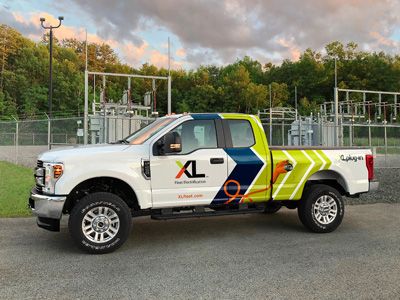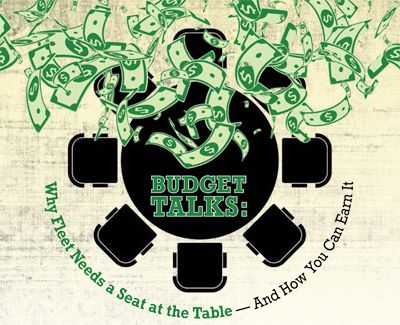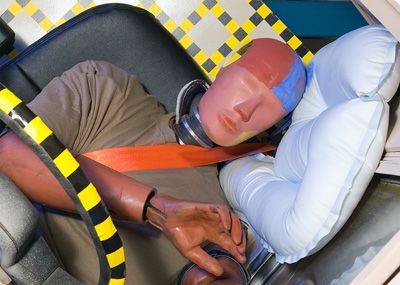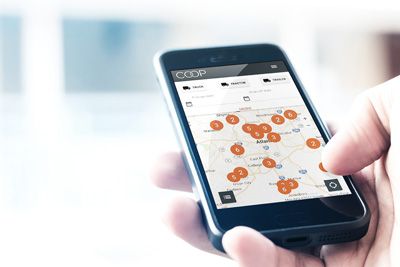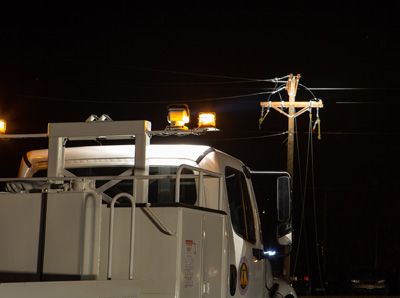If you’re rolling out a new fleet safety initiative, you can expect some pushback from crews in the field or technicians in the shop. That’s a given because people tend to resist change.
But what if you could improve the odds that your message will get past that resistance and be more memorable and impactful – that it will actually change behavior?
You can … by telling stories.
Think about it. Even if your organization equips vehicles with all the latest safety systems and provides extensive driver training, you can’t be with operators every day, 24/7, to make sure that they remember to follow through on company policies. But a good story will stick with those employees, reminding them of lessons learned, long after it has been told.
So, what makes storytelling a powerful leadership tool to increase your influence? Why do stories work? Here are three reasons.
Reason 1: Stories open minds and reduce resistance.
Stories are effective at opening the minds and lowering the defenses of the people you’re trying to reach.
“A story activates a different part of the brain, where instead of being critical and analyzing, the audience is just listening to the story,” said Paul Smith, leadership trainer and author of the best-selling book “Lead with a Story: A Guide to Crafting Business Narratives That Captivate, Convince, and Inspire.” “It creates that open frame of mind in people in a way that data alone cannot do.”
The idea here is that you can use stories to influence people without wagging your finger at them or telling them what to do. Stories allow the listener to arrive at conclusions themselves, making them more receptive to you and more motivated to follow through on your message.
For example, suppose you’re rolling out an initiative that could bring significant change to your organization – whether it’s rightsizing the fleet, deploying telematics or rolling out a new safety procedure. You’ll inevitably encounter employees who don’t want that change to happen, who will do everything they can to undermine your efforts. After all, if stakeholders feel like change is being forced upon them, their minds likely will be closed to any opportunities the change could bring to them and the company as a whole.
How, then, can you get your employees to willingly – and, perhaps, enthusiastically – join you on the journey?
That’s where story becomes your tool for influence, your tool to open their minds and reduce their resistance.
You could tell a story about how you and your leadership team arrived at your decision, with a focus on the challenges you were wrestling with and what the stakes would be if you didn’t act.
In your story, be candid about the potential pitfalls that lie ahead. But also reaffirm your deep-down belief that the team can rise to the challenge if everyone works together.
Or, perhaps you could share a story about another company that confronted a similar situation but made it through with a strategy like the one you’re proposing. Then give your employees a vision as to why the change you’re proposing is vital to their success.
Reason 2: Good stories spread and endure.
Good stories are portable. They’re easy to remember and retell. In other words, a good story becomes an ongoing teacher that outlives its original delivery.
In ancient times – before the invention of writing about 5,100 years ago – humans passed on traditions, teachings and warnings through stories because that’s the way we most easily understand and remember important ideas.
But even as writing grew in prominence, stories continued to be a powerful means to influence and shape public opinion and culture.
Consider ancient philosophers and religious teachers, like Plato and Jesus. Plato used the technique of dialogue, involving his teacher Socrates as the main character, to make his philosophical ideas more engaging and easier to understand. And Jesus used parables to significant effect.
Those big ideas packaged in the form of stories have spread and continue to shape our culture today.
But you don’t have to be a philosophical, religious or even a literary genius to tap into the power of storytelling to achieve significant impact. A story can be a simple retelling of an experience that others can benefit from.
Cautionary Tale: The “Todd Story”
For example, I was in eighth grade, and Todd was in seventh.
We were cross-country teammates. And one mile into a six-mile run, both of our lives were about to change.
As we got about halfway up a small bridge, Todd stepped out onto the street to cross; I was still on the sidewalk about to follow him.
But in a split second, a car came over the top of the bridge from the other direction. The driver didn’t see Todd in time and struck him a few feet away from me.
Thankfully, Todd survived, but he was severely injured. And I was shaken up, as you can imagine.
The lesson: Only cross the bridge at the top where you have maximum visibility to traffic coming from both directions. And be a better lookout for your teammate so that you both get back home safely.
But the biggest reason why I share this story with you?
Although this incident happened over 30 years ago, the “Todd Story” is still talked about as a cautionary tale warning young runners at my alma mater to be vigilant about their safety on the streets.
Think about your own organization. What are the stories that carry safety lessons in your company? When you draw those stories out and share them, they can become part of the institutional knowledge that continues to shape the culture and influence behavior long after they’ve been told.
The big takeaway here is that stories endure. They live on – even after you move on.
Reason 3: Humans are wired for story.
The reason why stories endure is that our brains are wired for story.
As Lisa Cron, author of “Wired for Story: The Writer’s Guide to Using Brain Science to Hook Readers from the Very First Sentence,” put it: “Recent breakthroughs in neuroscience reveal that our brain is hardwired to respond to story; the pleasure we derive from a tale well told is nature’s way of seducing us into paying attention to it.”
In other words, good stories grab our attention, draw us in and stick with us long after they have been told because our brains are wired to respond that way.
Take, for example, research by the neuroscientist Paul Zak.
Dr. Zak produced an animated story – which can be viewed at www.youtube.com/watch?v=DHeqQAKHh3M – about a 2-1/2-year-old boy named Ben who is suffering from brain cancer, and his dad, who is dealing with the inner turmoil of knowing something that Ben doesn’t – that the boy is dying.
In his research, Zak discovered that this story elicited two primary emotions from viewers: distress and empathy. And those emotions corresponded with the blood test that Zak performed on viewers before and after watching the story.
He found that the brain produces two chemicals when a story is told:
- Cortisol. This hormone focuses our attention on something important. It correlates with our emotion of distress. The more distress you feel, the more cortisol you release, and the more attention you pay to that stimulus.
- Oxytocin. This is associated with care, connection and empathy. The more oxytocin released, the more empathic and connected you feel.
Here’s the kicker: Those viewers who produced both cortisol and oxytocin were more likely to generously donate money to a stranger. In fact, the amount of oxytocin released predicted how much money people would give.
This is a prime example that good stories – when properly told – will literally change our minds in a way that also will influence our behavior.
The Bottom Line
Too often, leaders take a heavy-handed approach when trying to change behavior. Or, they’ll rely exclusively on data to hammer home their point. But if you really want to influence people and improve safety performance throughout your organization, try telling a good story instead.


